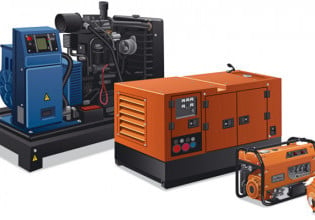Electrical switchgear engineers NOJA Power has highlight how its new generation of Automatic Circuit Reclosers (ACR or "auto recloser") will lower the cost and simplify connection of renewable energy (RE) generation to smart grids. RE is forming an increasing component of the world's generation capacity as nations step up their effort to limit carbon emissions.
Heads of government have reached an agreement at the 2015 UN climate change conference in Paris, France, to reduce carbon emissions in an attempt to limit the planet’s average temperature rise to 1.5 degrees C. The Paris agreement includes financial (US$100bn a year by 2020) and technological assistance for developing countries to help them bypass fossil fuels and move straight to RE. As a result of this, and previous carbon-reduction initiatives, RE generation is set to rapidly increase around the world. Australia, for instance, already has the highest penetration of grid-connected, rooftop photovoltaic systems anywhere on the globe; in some localities of Brisbane, Qld, for example, 60 percent of domestic customers have installed some PV capacity.
Integrating widespread RE generation into existing distribution grids––which were originally designed to accommodate huge power stations sending power in one direction over transmissions lines to local substations which stepped down the voltage for distribution across local networks¬––is very difficult. Smart grids––advanced, computerized electricity distribution networks––are better suited to the distributed nature, bidirectional power flows and precise monitoring and control demanded by RE generation. Nonetheless, integrating RE generation into a smart grid is still tough; challenges include building expensive new infrastructure, and dealing with the voltage variability, power quality, and grid protection issues that RE generation creates.
Modern ACRs such as NOJA Power’s OSM series––as fundamental components of smart grids¬-––already provide solutions to many of these challenges. For example, the ACRs perform voltage measurements on all six bushings, current measurement on all three phases and provide extensive power quality and data logging capability as well as many of the switching, bidirectional protection, control and communication capabilities required to integrate RE generation into the electricity grid.
However, developments are underway to enhance functionality to provide a comprehensive solution. For example, NOJA Power is developing synchrophasor technology for its products. The technology has become increasingly relevant since a 2004 U.S.-Canada investigation into blackouts recommended the use of synchrophasors to provide a real-time, wide-area grid visibility.
A key application of the technology is “islanding†detection. Islanding occurs when part of a network is isolated from the rest of the grid but continues to operate because it has a local source of generation (such as an RE source). Such a phenomenon is undesirable because it can be hazardous and can result in poor power quality potentially damaging utility assets. Synchrophasor technology provides a means for detecting islanding under nearly all load and generation conditions.
“The next generation of NOJA Power auto reclosers will deliver a cost-effective, reliable means for utilities to connect, monitor, control and protect renewable generation as part of future smart grids,†explains Neil O’Sullivan, NOJA Power’s Managing Director. “Notably, the ACRs will be equipped with synchrophasor technology to detect early signs of islanding and switch to change generation sources or shed loads to prevent an island forming.
“The company’s auto reclosers will provide a comprehensive solution for renewable energy integration at a fraction of the cost and require much less installation and commissioning time compared to today’s expensive alternative of building a new substation each time. RE generation that’s currently economically unviable because of infrastructure cost could then become practical.â€






